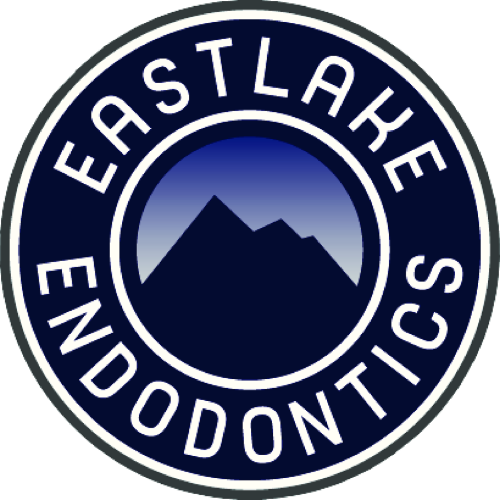When root canal therapy was performed on your tooth, the prior dentist made an opening in the top (biting surface) of your tooth and removed the internal nerve and blood vessels that are responsible for feeling pain. It is important to understand that the internal nerve is not the only sensitive tissue present in the area, however. Each tooth is supported by a ligament, gum tissue, and bone. There are also muscles, vessels, skin, additional external nerves, cheeks, etc., which are all capable of feeling pan. Often times we equate mouth (or regional pain) with a “toothache.” Identifying the true source, and subsequently the underlying cause is the first critical step in resolving the problem.
This places emphasis on Diagnosis, which is an important step during your consultation visit. Your diagnosis is a conclusion that is reached after adequate and proper assessment through examination, treatment history, traditional x-rays, and often times with the help of the more recent technology of 3-D (CBCT) evaluation.
There are dozens of reasons why a root canal treated tooth may still have pain, or pain returns. Some of the more common reasons are:
- Missed canals: Solution: Use CBCT and the Microscope to aid with treatment
- Incomplete cleaning of canals resulting in residual pulp tissue or irritants in the tooth: Solution: Non-hurried treatment, patience, skilled cleaning of the canal spaces that comes the experience of performing hundreds of root canal procedures every year.
- Recontamination of the spaces that were cleaned at the time the root canal was done. Solution: Immediate restoration (core buildup) at time of completion avoids the risk of a temporary falling apart and leaking. Placement of the core buildup while the tooth is still isolated under a rubber dam.
- Cracked tooth or root. Solution: Conservative treatment at the time of the initial root canal. Aggressive treatments remove tooth structure in critical places under the guise of “it makes the tooth cleaner.” Unfortunately, teeth treated this was become structurally compromised and can fail without the option to “fix it.” Solution: Unfortunately, by the time a tooth cracks or is weakened, this event cannot be reversed. The emphasis must be on prevention. At the time of initial root canal therapy, the dentist performing the procedure must understand this concept. The use of the microscope, CBCT, and a philosophy of providing long-lasting care all combine to avoid this situation.
At Eastlake Endodontics, over 50% of the treatment we provide is root canal retreatment. While it is unfortunate that your tooth may require another endodontic procedure in order to be preserved, rest assured that there is not a better, more qualified doctor and staff anywhere to address your concerns.
We recommend a thorough evaluation to provide you with treatment outlook and options. We are here to help!
